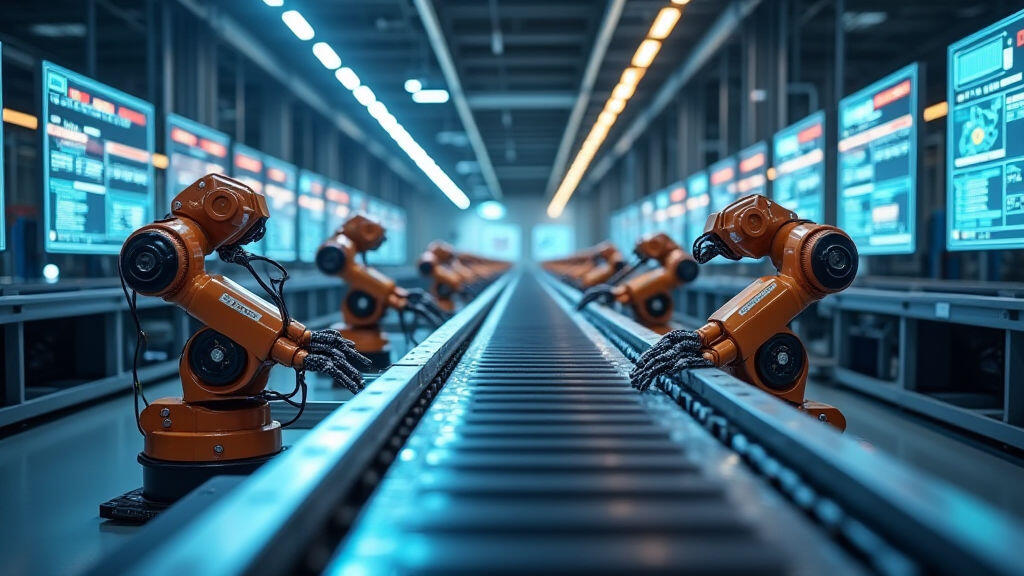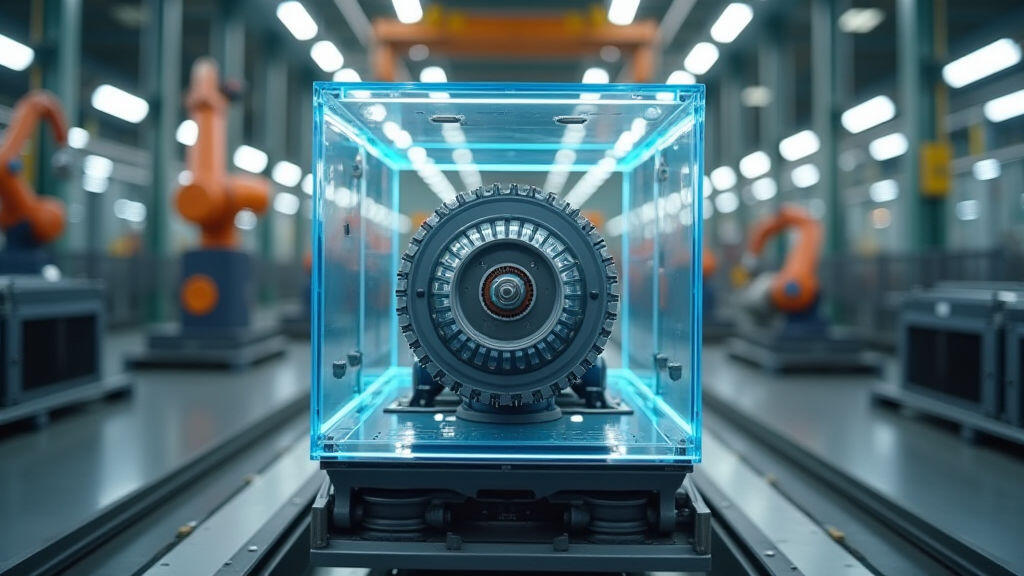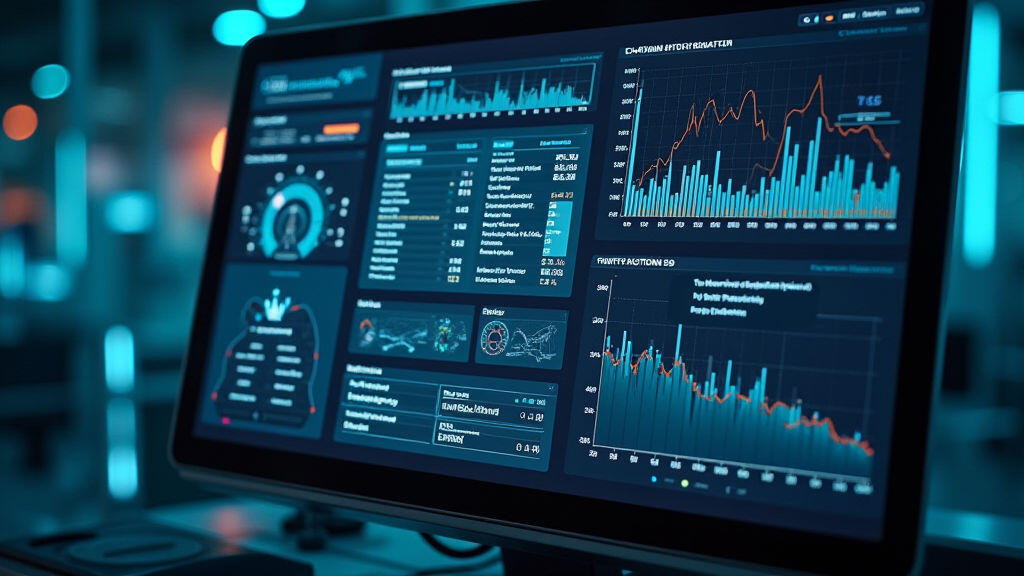Anjing Road, Xiaolan, Zhongshan, Guangdong, China
info@mes-drive.com
08.00 AM-09.00 PM

The past few months have seen a meteoric rise in the use of artificial intelligence across manufacturing floors. From generative design algorithms that model new robotic joints to AI‑driven predictive maintenance that can shut down a machine before it breaks, the buzz is unmistakable. According to a recent Forbes report, aerospace and automotive factories that have adopted AI‑based automation have reported productivity gains of up to 30 % without adding additional workforce. Amidst this whirlwind of digital transformation, a familiar, but quietly indispensable, component is stepping into the spotlight: the gear motor, also known as a reducer motor. Although it may appear as a simple mechanical part, its role in delivering precise, reliable motion is pivotal for the smooth functioning of AI‑driven production lines.

Collaborative robots—or cobots—have quietly become the new flagship of smart factories. They often need to move swiftly yet accurately around human operators, and they depend on gear motors to convert the high‑speed rotation of an electric motor into slow, controlled motion that a robot arm can execute. When AI planners schedule tasks in real‑time, the gear motor’s consistent torque and low‑speed performance ensure the robot can adapt instantly, keeping the AI’s schedules from breaking.
Large machines such as CNC lathes, wire‑cutting machines, and hydro‑forming pressurize water through complex valves that require tight positional control. Here a gear motor’s reduction ratio not only translates high rotational speed into the torque needed for the application but also reduces electrical consumption. As AI systems shift to more complex deep‑learning models that require massive computational power, factory operators are under pressure to keep energy bills down. Gear motors, with their high efficiency and low heat dissipation, help strike that balance.
Predictive maintenance algorithms rely heavily on accurate sensor data—speed, torque, vibration—so that a fault can be forecasted before it manifests. Gear motors typically include built‑in encoders or can be retrofitted with them, delivering both motor position and speed. The data that flows from these sensors feed AI models that not only schedule maintenance but can also recalibrate motor parameters on the fly. In a recent case study by Schneider Electric, factories that integrated sensor‑enabled gear motors saw a 41 % decrease in unscheduled downtime.
The surge in micro‑fluidics, biomanufacturing, and even 3D‑printed drug delivery devices illustrates how AI is pushing the limits of “tiny, precise motor control.” In these arenas, gear motors are scaled down, yet retain the same mechanical advantages: consistent torque, compact footprint, and the ability to interface directly with soft‑robotic actuators. As AI models continue to be ported to these microsystems, the demand for gear motors—both standard and customized—will adapt accordingly.
According to the latest market research by Grand View Research, the global industrial gear motor market is projected to reach USD 12.6 billion by 2030, growing at a CAGR of 6.3 %. A large chunk of this growth is driven by smart factories that incorporate AI, IoT, and robotics. In particular, the automotive and pharmaceutical sectors are reporting a 15 % increase in gear motor purchases year‑on‑year, citing the need for reliable motion control in AI‑augmented assembly lines and bioprocessing equipment.
The demand isn’t limited to high‑value industries. Construction technology firms are deploying autonomous off‑site robotics to build bridges and precast concrete sections. These machines, founded on AI for path planning, nod heavily on gear motors to achieve the low‑speed precision required for joint articulation and heavy lifting.
The rapid convergence of AI and automation forces gear motors not only to keep up but to stay ahead. Manufacturers of gear motors are:
Integrating Smart Sensors: Adding embedded Hall‑effect switches, temperature probes, or even micro‑heat‑flux sensors enable real‑time torque tracking—essential for AI‑controlled spindle speed regulation.
Enabling FC‑Free Drives: The introduction of brushless, field‑controlled gear motors reduces mechanical wear and offers higher efficiency, aligning with AI’s energy‑conservation demands.
Modular Design: Offering standardized BPMM (burn‑in performance monitoring) modules allows designers to stack multiple gear motors on a single PCBA, providing high precision without compromising packaging constraints.
Open‑Source Firmware: Several manufacturers are releasing firmware that can be natively integrated with cloud‑based AI platforms, ensuring seamless firmware updates and predictive analytics.
These trends illustrate that gear motor manufacturers are moving beyond pure mechanical design toward holistic system optimization—code, electronics, and mechanics working in concert.
Consider the automotive manufacturer Tesla’s production of powertrain components. The company recently announced a new line dedicated to producing electric motor casings. The line uses AI‑driven vision systems to detect defects in real time and AI scheduling systems to route each component through a sequence of press machines. Each press, in turn, employs a gear motor to achieve the low‑speed, high‑torque motion required for deep‑draw operations. The synergy between AI scheduling and gear motor precision has already reduced the production cycle from 20 minutes to 12 minutes—over a 40 % improvement that translates into substantial cost savings.

By 2035, the average industrial factory will host at least 50 AI‑enabled machines. Each machine will contain multiple motor modules, with gear motors representing the backbone of the motion control subsystem. As AI algorithms become more sophisticated, the need for motors that can operate across a wide speed range without sacrificing torque will intensify.
Moreover, as the Internet of Things expands, gear motors will become “connected appliances” themselves—communicating directly with factory management systems to report vibration patterns, wear levels, and operational efficiency. That connectivity will close the loop, allowing AI systems to dynamically recalculate operating parameters, thus achieving optimal performance.
The renaissance of AI in manufacturing is not only re‑defining how machines are programmed but also redefining the very components that make those machines run. Gear motors—through their precise torque control, energy efficiency, and compatibility with smart sensors—are essential to the AI‑driven ecosystem. They provide the mechanical foundation for autonomous robots, adaptive conveyor belts, and high‑precision machinery that AI orchestrates. As the industry marches toward fully digital, lightweight, and highly efficient production lines, the humble gear motor will remain a linchpin, quietly yet critically enabling the next revolution in industrial automation.

Leave A Reply
Your email address will not be published. Required fiels are marked